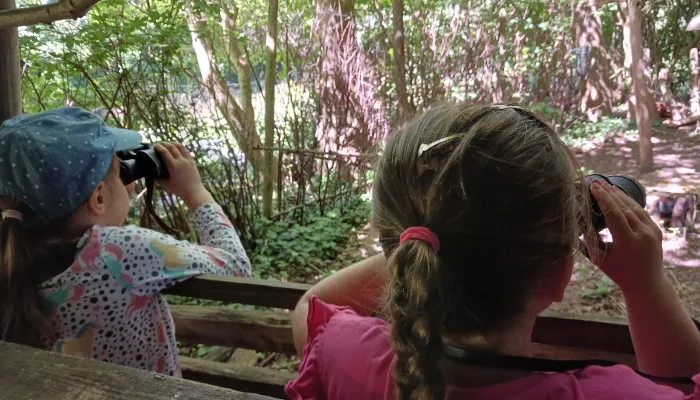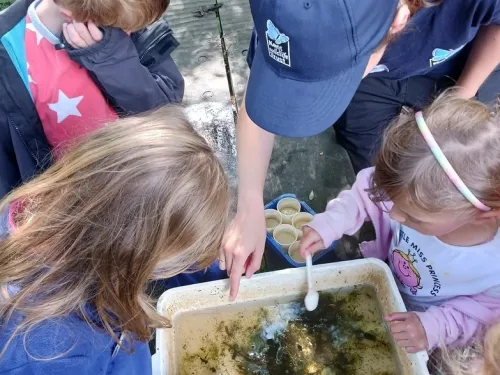4. Participate in a citizen science project
Citizen science is any project or research done with the help of the public. Kent Wildlife Trust’s ‘Bugs Matter’ project is just one example of citizen science, in which people across the UK send us information about the bugs that appear on their numberplates. This helps us to understand insect populations.
By taking part in citizen science, you could be contributing to important scientific research and perhaps even exciting breakthroughs – who knows?!
The BBC has a great page on getting started with citizen science here.
Whatever you take part in, it’s well worth encouraging children to:
Enjoy the process! Some activities, like watching out for certain wildlife species, can be focused and peaceful.
Reflect. It’s cool to know that you have contributed to research. Even the smallest of actions add up to a lot.
5. Come up with 5 promises for nature
Slightly different from the manifesto for wildlife, this activity involves thinking about some tangible things you could do to help our environment. What eco-friendly changes could you make?
Depending on the age of the children and the setting, this could be a good chance to try to use problem-solving skills. First, you could present them with some facts, like:
Water is not a limitless resource – we need to be careful about how we use it
The rubbish we throw in the black bin goes to landfill, where it produces carbon dioxide which is bad for the environment
As we take away more natural spaces, many species struggle to find places to eat and drink – birds, for example, may find it hard to locate water they can drink and bathe in.
Encourage them to think of some things they could do at home and school to help the natural world. From the list above, they might think of:
Saving water by turning off taps when not using them (e.g. when brushing teeth)
Using the ‘reduce, reuse, recycle’ method to reduce waste that goes to landfill
Creating feeding stations and water baths for birds. Check out our guide to feeding birds here.
Use our ‘65 green actions’ blog for more inspiration.
6. Plant wildflower seeds
Gardening has long been thought of as a mindful, calming activity. But it’s also often seen as something to leave with the adults!
Why not get the kids out in the garden, balcony, or shared space – any area where you can spare a pot or patch – and get them gardening? It can be really exciting to plant something and see a sprout pop up in just a few weeks. Just make sure you get your hands on some native wildflower seeds so that they’re suited to the environment, and then get sowing.
💡A nice addition to this activity is to plant with intention (literally!). Say your hopes for the seeds out loud: “May you be a happy and healthy flower.” It might feel silly at first, but it’s a great way to make sure you’re grounded in the present moment – just focusing on the planting. Invite the kids to feel the soil under their fingers and listen carefully for the sound of water hitting the earth as they water the seeds lightly for the first time.
Return to your wildflower patch often to check on your seedlings, water them, and watch them grow.
7. Visit a nature reserve
Lastly, a great way to look after your mental health this Children’s Mental Health Week and beyond is to pay a visit to a local nature reserve. Take a look at a map to see what’s nearby – there might be a hidden gem you’ve never visited.
Check out the Kent Wildlife Trust reserves in your area and see what wildlife events are coming up, including our Wilder Holiday Club in February half term! We’ve also got lots of education resources here, including downloadable colouring sheets and spotter guides.
Have these tips been helpful? We hope you get to enjoy some time out in nature soon, breathing in fresh air and breathing out day-to-day worries. If nothing else, exploring the undergrowth, watching ‘creepy crawlies’, and making mud pies is a bucketload of fun! You can learn more about Kent Wildlife Trust’s commitment to Nature for Wellbeing here.






